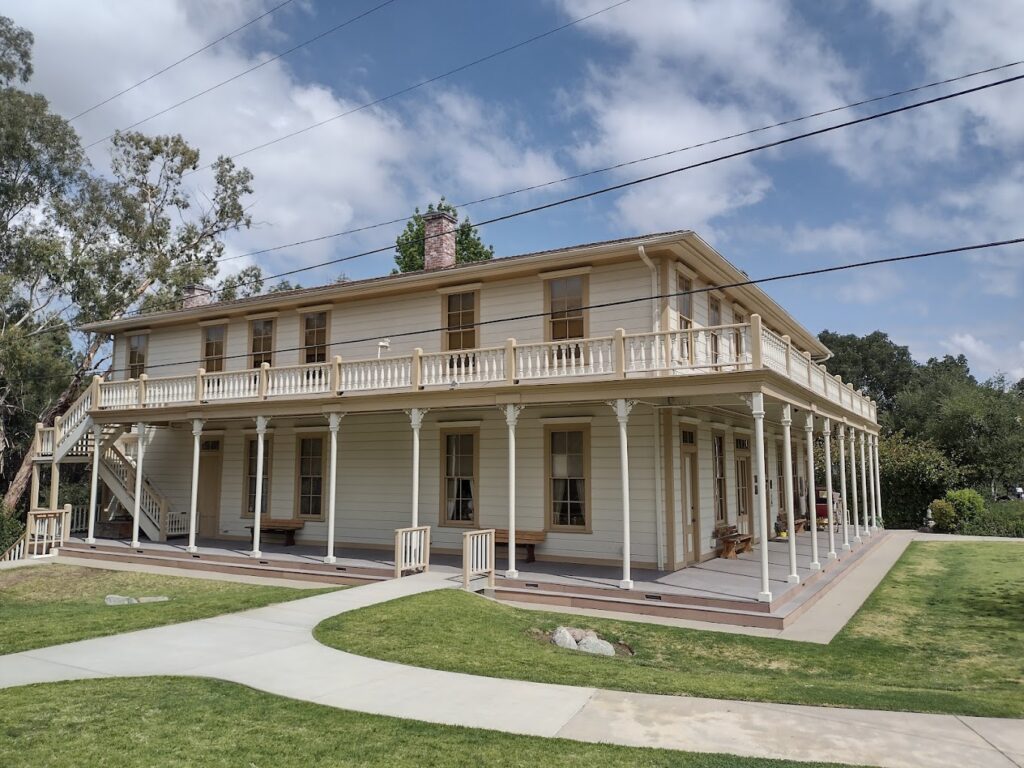
Step back in time and immerse yourself in California history at the Stagecoach Inn Museum in Newbury Park. This historic landmark serves as a vibrant testimony to the rich history of the region and offers an unforgettable journey through time.
Historical Significance
Originally built in 1876 as the Grand Union Hotel, the structure has also been known as the Conejo Hotel and the Stagecoach Inn, providing a resting place for travelers during the stagecoach era. Today, the Stagecoach Inn Museum stands as one of California’s cultural treasures and is listed on the National Register of Historic Places.
Exhibits and Features
The main building of the museum is a replica of the original hotel, meticulously rebuilt after a fire in 1970. The inn itself is a captivating piece of architecture, with Victorian-styled rooms filled with period-appropriate artifacts that provide a glimpse into 19th-century life.
The museum complex also houses a Chumash Indian exhibit, a nature trail, a Victorian rose garden, and additional historical buildings including a carriage house, pioneer house, and a schoolhouse. These settings offer snapshots of various aspects of early life in California from the Native American period through to the pioneer days.
Events and Programs
Beyond its exhibits, the Stagecoach Inn Museum also hosts a number of events and educational programs throughout the year. These include living history demonstrations, cultural festivals, interactive school tours, and seasonal events, each designed to engage visitors and foster a deeper understanding of the past.
A Unique Learning Experience
Whether you’re a history buff, a student, or just a curious visitor, the Stagecoach Inn Museum is more than just a museum. It’s a unique learning experience that invites you to travel through time and explore the stories, people, and events that have shaped California’s history.
In this historic oasis nestled amidst the modern bustle of Newbury Park, you’ll uncover a fascinating slice of the past. The Stagecoach Inn Museum stands not just as a testament to history, but as a vibrant, ongoing story that continues to captivate and educate its visitors.